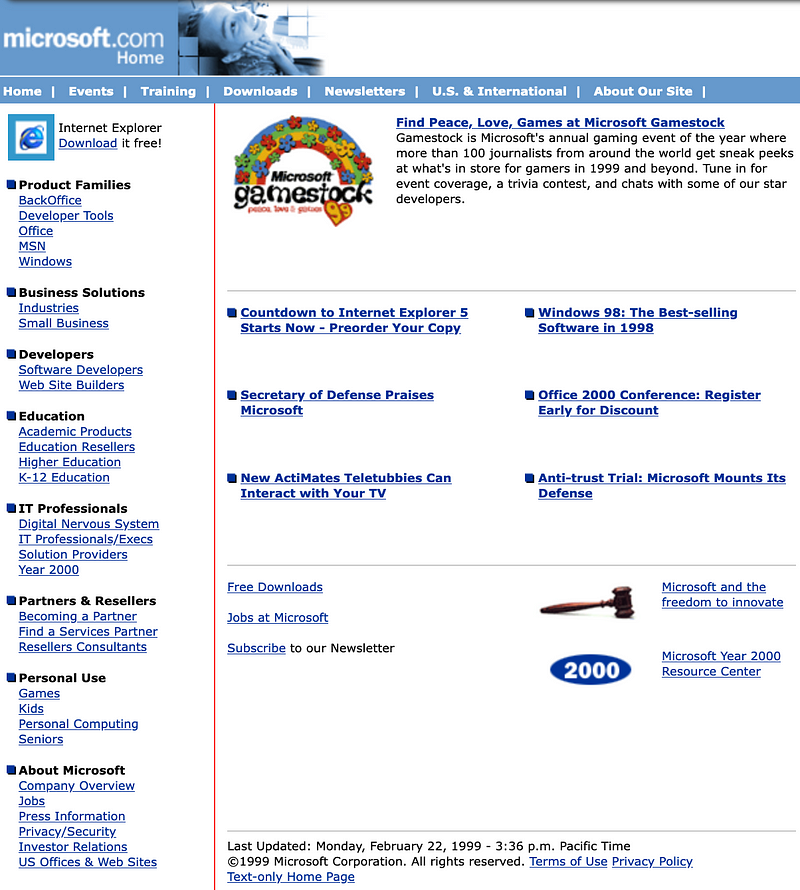The Evolution of Design: Why UX Isn't the Only Key to Success
Written on
The Transformation of Design
It's been over two decades since Alan Cooper published his influential book, “The Inmates Are Running the Asylum.” In this period, the importance of UX design has been recognized by a wide array of businesses, from emerging startups to large global corporations. The success of these companies increasingly hinges on how effectively they engage users with their products.
Design has undergone significant transformations, evolving from the simplistic websites of the early 2000s to the contemporary trends of skeuomorphism and flat design.

Progress in design tools like Sketch and Figma has made it easier for aspiring designers to enter the field compared to other IT professions. Some individuals now identify as “UX/UI” designers, distancing themselves from traditional web designers through the use of specialized techniques and jargon such as CJM, USM, and personas.
Nonetheless, it has become increasingly rare to find designers who are unaware of these methodologies. Thanks to the widespread adoption of standard design templates and systems (like Google’s Material Design and iOS guidelines), even novices can produce commendable results quickly.
The Shift from Art to Science
Gradually, design has transitioned from being viewed merely as an art form to being recognized as an applied science. The appreciation for innovative and functional design has diminished, as it has become commonplace. According to Jakob Nielsen, by 2050, enhancements in UX will yield only a modest 25% improvement in measurable product metrics. Furthermore, he predicts that 11% of the high-IQ workforce will engage in design roles, leading to heightened competition among designers.
To thrive in this evolving landscape, designers must either specialize in a specific niche (such as designing complex banking systems) or become versatile T-shaped professionals who can effectively collaborate with businesses, users, and developers.
Essential Skills for Future Designers
To remain relevant, designers need to cultivate several skills:
Understanding Business Metrics
Gone are the days when designers could create user-friendly interfaces without considering the economic aspects of their designs. Today, a designer must grasp key metrics involved in product analytics, such as:
- CAC (Customer Acquisition Cost): The cost incurred by a company to attract new customers.
- LTV (Lifetime Value): The total revenue expected from a customer throughout their relationship with the business.
- DAU (Daily Active Users): A measure of unique users engaging with a product daily.
- ARPU (Average Revenue Per User): The average revenue generated from each active user over a specified timeframe.
Additionally, a foundational knowledge of SQL can enhance a designer's capabilities, enabling them to derive insights from raw data typically reserved for data analysts.
A/B Testing and Statistics
Participation in A/B testing has become a routine task for designers. However, many still equate it to simply creating two different interface designs. Future designers must be adept at interpreting A/B test results, which necessitates some knowledge of basic statistical concepts.
Video Description: Discussing whether UX/UI design is becoming obsolete in 2024, exploring the evolving role of designers in tech.
Technical Proficiency
A working knowledge of HTML/CSS and a basic understanding of JavaScript are increasingly necessary for designers. This knowledge helps them prepare accurate layouts for developers and comprehend how web systems function. Familiarity with product architecture and integrations—though primarily the realm of programmers—can significantly streamline the design process.
A practical example: when a user accesses their account to check their balance, if the service responsible for this information is down, the designer should anticipate this scenario and create a user-friendly error message. Understanding system architecture allows designers to foresee potential issues and craft solutions proactively.
User-Centric Design
Numerous articles highlight user interaction patterns and the differences between effective and ineffective interface designs. While these resources are valuable, they may not cover future scenarios—like designing for brain-computer interfaces. In such cases, the principles of human psychology will guide design decisions.
Understanding behavioral psychology is crucial for creating user experiences that resonate with human instincts and motivations, helping designers craft products that genuinely meet user needs.
Conclusion: The Future of Design
The future of user interaction with technology is unpredictable. However, designers must adapt to whatever new forms of engagement emerge. By enhancing their understanding of analytics and quantitative research, designers can increase their value in projects.
Furthermore, fostering effective communication with developers will lead to improved product outcomes, ultimately resulting in happier users. Striving for user satisfaction remains the primary objective of design.
Video Description: A deep dive into the debate surrounding the relevance of UX design, addressing misconceptions and the future of the field.